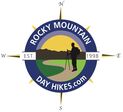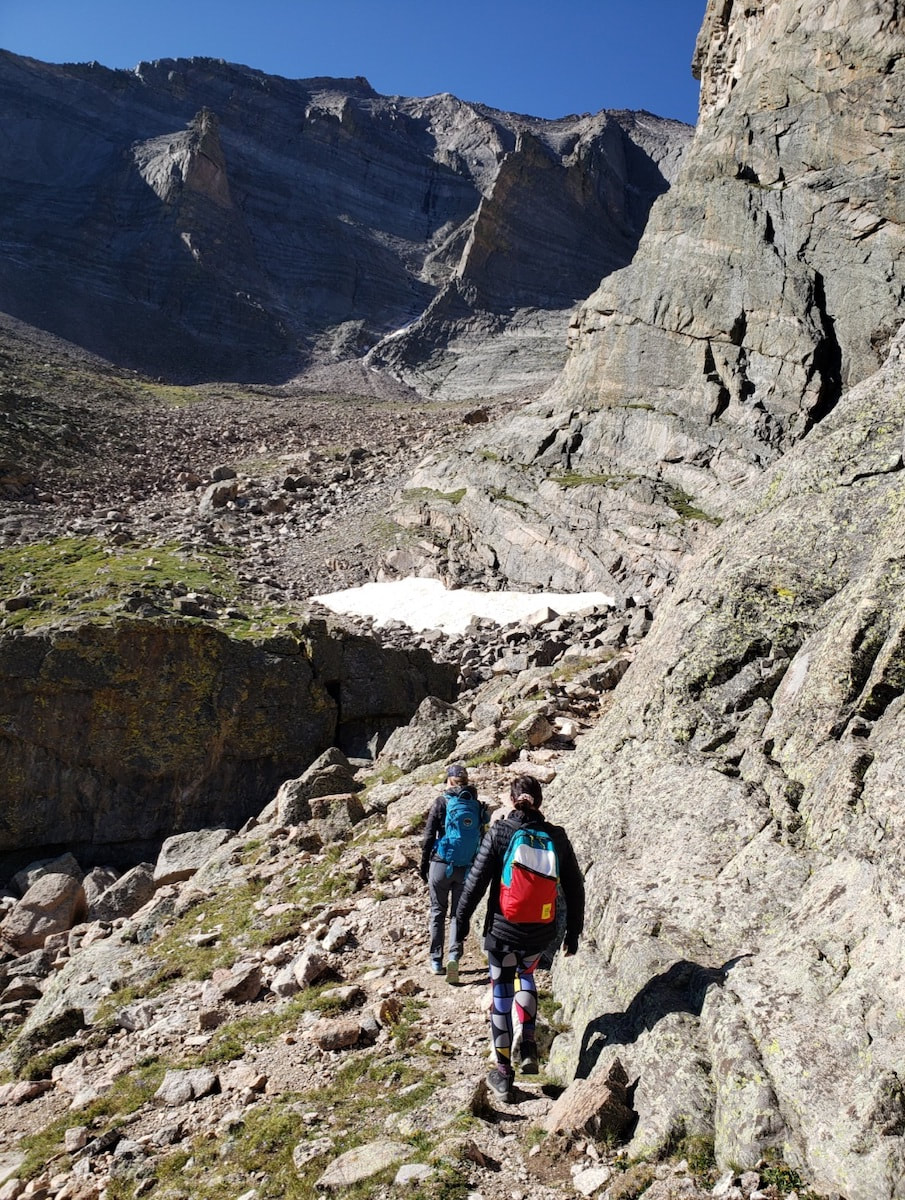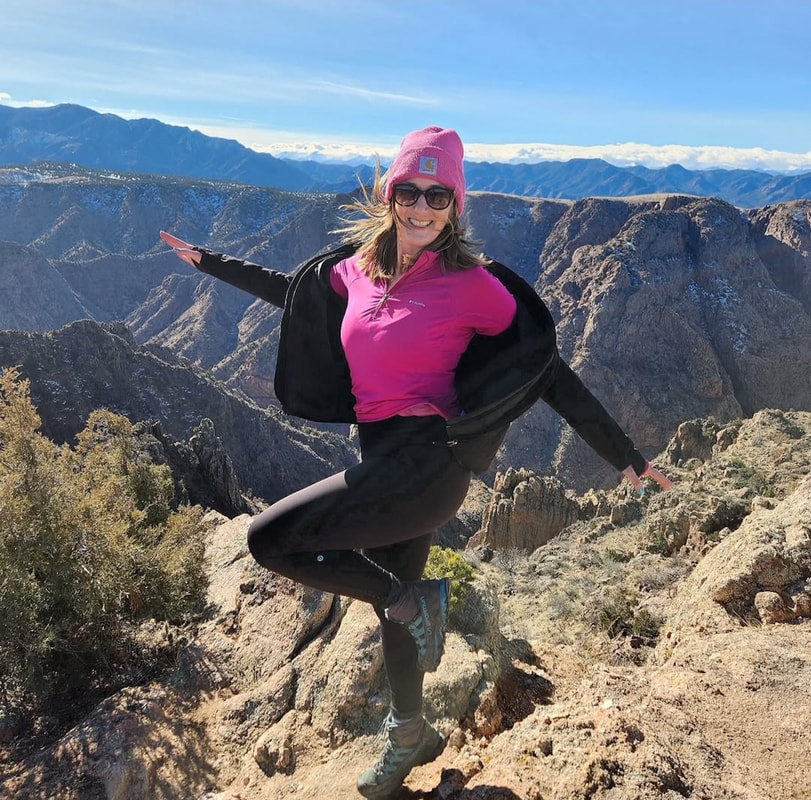|
Notes from the
Trail |
|
by Sharon Saternus Founder/CEO, Femme Trek: www.femmetrekltd.com Photo: Changing weather near Lake of the Clouds. RMNP. M. Selleck It can happen faster than you think. You miss a turn, lose the trail, or get caught in a sudden storm. Your phone has no signal, and the sun is dropping behind the ridge. In the backcountry, survival isn’t just about gear, it’s about mindset. As the owner of a guiding company in Rocky Mountain National Park, I’ve spent over 20 years exploring trails around the world in places like China, Tajikistan, Arizona, the Appalachians, California, and the Rockies. I know how quickly a hike can turn into something else entirely. That’s why I believe preparation isn’t just helpful; it’s essential, and it can make the difference between life and death. Survival Is Psychology First The first skill you need in a survival situation is keeping your mind calm. Your Positive Mental Attitude (PMA) is your most powerful survival tool. Survival psychology experts say that about 95% of people who die from psychological trauma in survival situations do so within the first three days. That’s also when most search and rescue efforts are successful. If you can hold on mentally, your odds of making it out alive are very good. That means resisting the urge to panic, act without thinking, or walk aimlessly just to stay warm. Those reactions burn energy, cloud judgment, and can lead you farther from help. STOP Before You Spiral The best tool you can use when things start to go sideways is a simple mental checklist: STOP. S: Stop. Sit down. Take a breath. Panic will only speed up the spiral. The first move is no move at all. T: Think. Ask yourself: What do I know for sure about my location, the time of day, and my physical state? When did I last remember being on the trail? What do I not know? O: Observe. Look and listen to your surroundings. Can you hear water? See landmarks? Hear people? P: Plan. Choose your next steps with intention. Will you stay put and signal? Turn back toward the last known trail marker? Move toward water or shelter? The most common mistake is to keep walking, either out of anxiety or just to stay warm. But that burns calories, breaks down your body, and increases disorientation. It’s surprisingly common for people to get turned around and unknowingly walk in circles. If you’re cold, build a shelter and stay visible. Even if you change your strategy later, having a plan puts your mind back in control. The Rule of 3s: Your Survival Priorities The Rule of 3s can help you prioritize your actions when your mind is racing and may be the difference between life and death. You can survive:
Even Basic Survival Knowledge Can Save Your Life Carrying key essential items like a knife, bivy or space blanket, paracord, water purification, a compass and map, a signal mirror, and a light can be a huge help in an emergency. But even hikers with limited gear have survived backcountry emergencies with the right knowledge, basic skills, and a clear mindset. A 2018 report by the Wilderness Medical Society concluded that most backcountry fatalities, even among seasoned hikers, were linked to inadequate preparation and limited survival knowledge. These findings emphasize that many of these tragedies could have been prevented with just a few foundational survival skills. Did you know that exposure is one of the fastest and most underestimated killers outdoors? In the Rockies, even summer temperatures can dip into the 40s or 50s. A drop of just two degrees in core body temperature can trigger hypothermia. Once you begin to shiver uncontrollably, your coordination falters and mental clarity fades creating a dangerous situation when you need to think clearly and act with intention. That’s why it’s important to know when and how to build a shelter, insulate your body, conserve energy, and signal. Take a course, practice key skills, and make sure you’re carrying the 10 Essentials, and just as importantly, that you know how to use them. Knowledge and skills are what buy you time. Being Found: Signaling If you’re lost, your number one goal is not just to survive, it’s to be found. The best signal you can leave behind is telling someone where you’re going, when you’ll be back, when they should start to worry, and who to contact if you don’t return. This simple step can dramatically shorten search time and may be the reason rescuers know to come looking in the first place. SOS beacons can be life-saving, but in many backcountry areas, it may still take hours or even days for help to arrive. That means staying alive, visible, and ready while you wait. Audible signals like whistles are helpful but considered secondary, since sound doesn’t travel far through dense forests or across ridgelines. If you’re using a whistle, remember the international distress signal: three blasts, followed by a pause, then repeat. For visual signals, your best bets are signal mirrors, bright-colored gear, reflective materials, movement, or signal fires. During the day, smoke is most effective. At night, use fire or headlamp strobes. If building fires, arrange three in a triangle or line the universal signal for distress. To increase your visibility, find an open area and spread out your gear. Create contrast against the environment with color and movement. Anything that flashes, flickers, or shifts catches attention, especially from the air. These are just a few of the strategies you can use. In a real emergency, knowing how to implement them calmly and effectively can mean the difference between staying lost and being found. What You Know Can Save You Survival knowledge isn’t about being a doomsday prepper or wilderness expert. Survival is a life-or-death situation that’s about keeping yourself alive in a backcountry emergency and knowing what to do to get rescued or get yourself out. The more you understand how to respond, the calmer you’ll stay, and the better your chances of getting home.
8 Comments
Connie B
7/10/2025 02:13:13 pm
Wonderful article, Sharon. I am not a hiker but read the article and thought the STOP acronym is one that could be useful in many emergency situations. Thank you for the informative article. I’m
Reply
Sharon Femme Trek
7/18/2025 04:12:46 pm
Thank you so much for reading and for your kind words! You're absolutely right, the STOP acronym is versatile and can be helpful in all kinds of situations, not just out on the trail. I'm so glad the message resonated with you!
Reply
Sharon Femme Trek
7/18/2025 04:18:41 pm
Thank you so much, Colette! You're absolutely correct in recognizing that having a positive mental attitude can go beyond hiking and can help us face all kinds of challenges in life. I'm so glad the article made you feel empowered and prepared.
Reply
Sharon Femme Trek
7/18/2025 04:19:52 pm
Thank you so much for the kind words and for encouraging others to share it. That’s exactly my hope that this information reaches the people who need it before they ever realize they do. I truly appreciate your support! 💛
Reply
Stephanie Muller
7/14/2025 08:02:36 am
Really great information AND your FB post was perfect! Thank you for all you do!
Reply
Sharon Femme Trek
7/18/2025 04:21:57 pm
I really appreciate that, thank you! I’m passionate about making safety accessible and empowering, and it means so much to know it’s landing with people. Thanks for being part of it!
Reply
Leave a Reply. |
"The wild requires that we learn the terrain, nod to all the plants and animals and birds, ford the streams and cross the ridges, and tell a good story when we get back home." ~ Gary Snyder
Categories
All
“Hiking -I don’t like either the word or the thing. People ought to saunter in the mountains - not hike! Do you know the origin of the word ‘saunter?’ It’s a beautiful word. Away back in the Middle Ages people used to go on pilgrimages to the Holy Land, and when people in the villages through which they passed asked where they were going, they would reply, A la sainte terre,’ ‘To the Holy Land.’ And so they became known as sainte-terre-ers or saunterers. Now these mountains are our Holy Land, and we ought to saunter through them reverently, not ‘hike’ through them.” ~ John Muir |
© Copyright 2025 Barefoot Publications, All Rights Reserved








